Temperatures reach a scorching 30C before midday but thunderstorms forecast
Thursday could be the hottest day of the year so far.
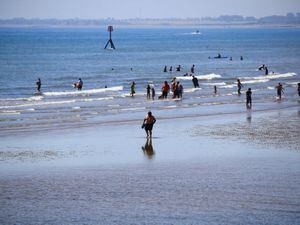
Scorching temperatures saw the mercury rise to 30 in parts of the UK before midday but thunderstorms are expected to bring downpours and lightning strikes to the western half of the country.
Thursday’s high could top the 32.6C (90.7F) reached on Wednesday, making it the hottest day of the year so far.
But there have been warnings not to be tempted to cool off in open water, following the deaths of two people in recent days in Berkshire and Scotland.
A 10-year-old boy died after getting into difficulty in Loch Lubnaig, near Callander in the Highlands on Wednesday evening, Police Scotland said.
Meanwhile, a body was found following a search for a missing man at Lulle Brook in Cookham, Berkshire.
A cousin told the PA news agency that Syrian refugee Eyad Al Ryabi had gone into the water on Tuesday evening to try to help his friend.
The friend survived and was taken to hospital, Thames Valley Police said.
The National Fire Chiefs Council (NFCC) tweeted: “Although the weather is hot, the water is not. Cold water shock can take your breath away please do not be tempted to cool off in open water and #BeWaterAware.”
People have also been warned to stay hydrated while out and about in the hot conditions, with sunseekers flocking to beaches in huge numbers in recent days, despite social distancing measures still being in place.
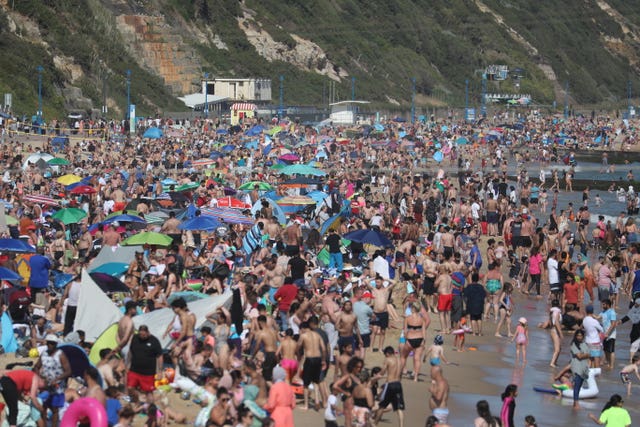
An amber level three heat-health alert, issued by the Met Office, was extended on Thursday to take in Yorkshire and the east and south of England as well as the West and East Midlands.
The warning requires social and healthcare services to target specific actions at high-risk groups, according to the Met Office website.
Health authorities have encouraged those most vulnerable – many of whom have been shielding during lockdown – to protect themselves amid the “exceptionally hot weather forecast this week”.
Public Health England (PHE) said older people, those with underlying health conditions, and very young children were all more at risk from the higher temperatures.
It is expected temperatures in west London could reach 33C (91.4F), while parts of Wales could see the mercury rise to 34C (93.2F).
The thermometer had already hit 30C at Porthmadog in Wales on Thursday morning.
The Met Office has issued a yellow warning for thunderstorms across Northern Ireland, Wales and the west of Scotland and England, with the storms set to move eastwards into Friday.
The rainfall brings a risk of flooding and disruption to some places, the forecaster said.
Temperatures reached 32.6C (90.7F) at London’s Heathrow Airport at 2.46pm on Wednesday making it the hottest day of the year so far.
Met Office meteorologist John Griffiths said there was a “low chance” that the Welsh Marches – the area along the Welsh border – could see temperatures of 34C (93.2F) “very locally”.
Should that happen, it would be the hottest June on record in Wales, surpassing the previous peak of 33.7C (92.7F) on June 18, 2000.
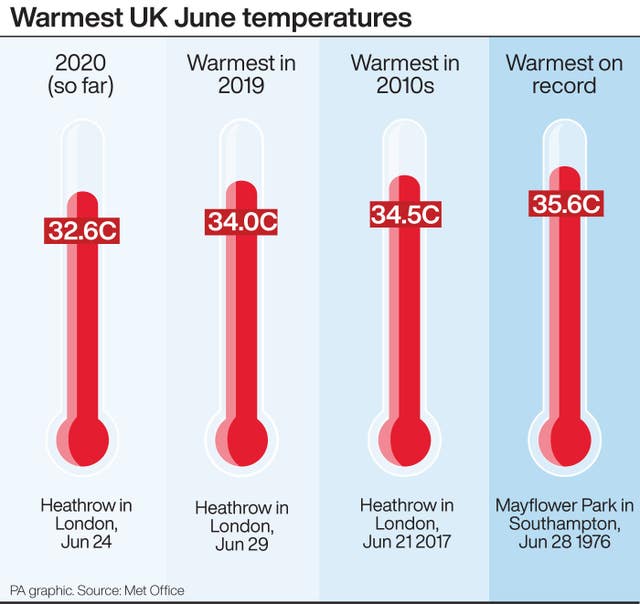
The storms are expected to continue from midday on Friday through to Saturday morning, with another yellow warning in place for the whole of the UK.
Areas hit by the storms could experience “torrential downpours” with between 30mm to 50mm of rain falling in an hour.
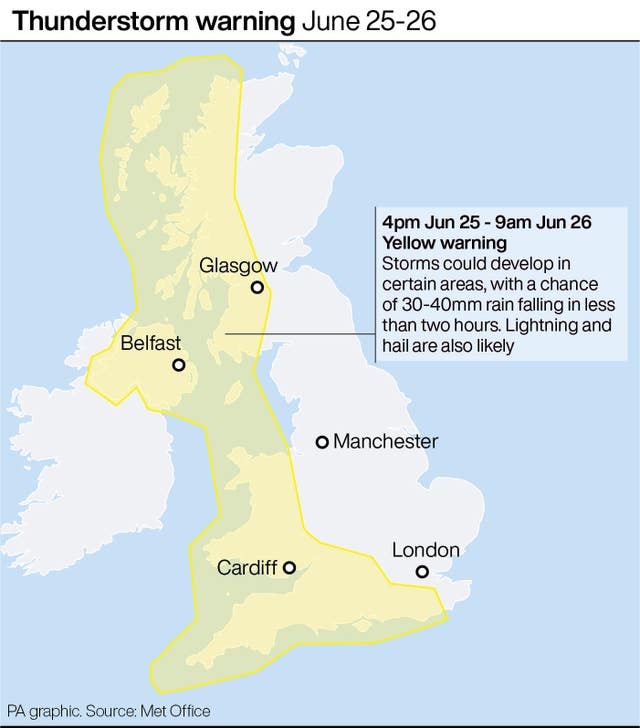
People have been advised to keep cool and stay hydrated where possible.
The Met Office said UV levels were expected to remain at eight across many parts of the UK on Thursday.
Dr Michaela Hegglin, associate professor in atmospheric chemistry at the University of Reading’s Department of Meteorology, said Thursday could see some of the “highest UV levels ever recorded” in Britain.
She said: “This is because of a combination of factors. We are at the summer solstice, when the sun is almost directly overhead at one o’clock.
“UV levels this high are rare in the UK, so people with light skin should be very careful to avoid getting burnt.
“While UV is important for getting vitamin D and keeping us healthy, too much of it can cause skin cancer or eye cataracts.”
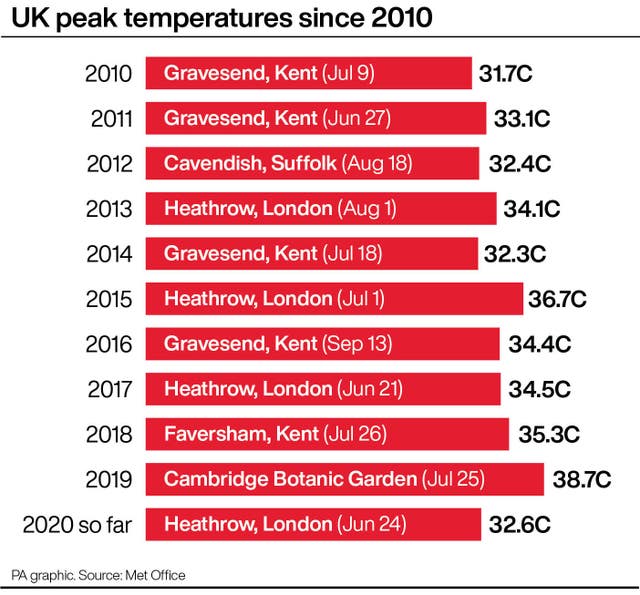
Friends, family and neighbours have been urged to keep checking on the vulnerable, who might still be spending more time at home due to coronavirus, by keeping in touch on the phone.
Shoppers have also been advised to be aware they could be forced to spend extra time in the sun as a result of social distancing measures, and warned to protect themselves by bringing water and wearing high factor sunscreen.
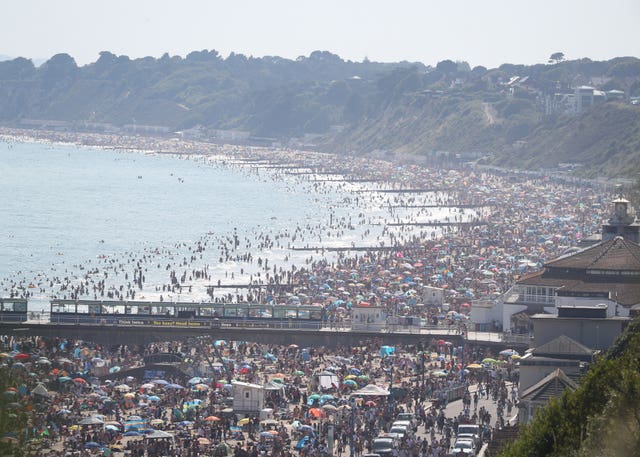
Dog owners have been urged to avoid exercising their pets during the hottest part of the day, with Vets Now, a provider of emergency veterinary care, warning that the average survival rate of a dog diagnosed with heatstroke was 50%.
Meanwhile, fire chiefs said they wanted to “debunk this myth” that hand sanitiser left in hot cars could pose a fire risk.
Roy Wilsher, NFCC chair said: “We want to reassure people that this product will not combust if left in a car – even on the hottest day. For hand sanitiser to cause a fire it would need to come into contact with a spark.
“Hand sanitiser is very important in the fight against the spread of Covid-19, therefore it is is essential we debunk this myth.”
People are advised to keep their hand sanitisers containers closed and out of direct sunlight and ensure they keep it away from any naked flame.
London Fire Brigade has warned people not to have barbecues on dry grass, not to drop cigarettes or matches, and not to leave rubbish such as glass bottles lying around amid a risk they could start fires.





